Perhaps the most obvious place to see animals in London is at London Zoo, the world’s oldest scientific zoo. But did you know you can see more creatures great and small by traveling across the capital? Next time you’re able to visit, see just how many animal sculptures and objects you can spot in this great city.
Let’s start at the Tower of London where you can see polar bears, monkeys, lions and an elephant. These days they are wire sculptures representing the real animals that occupied the Tower for six centuries as part of the Royal Menagerie.
Just a short walk from the Tower of London, on the side of a building, is one of the smallest animal sculptures you’re ever likely to see: two mice eating a piece of cheese. The story goes that two construction workers argued over a missing cheese sandwich and ultimately fell to their deaths, when in fact mice had eaten the sandwich!
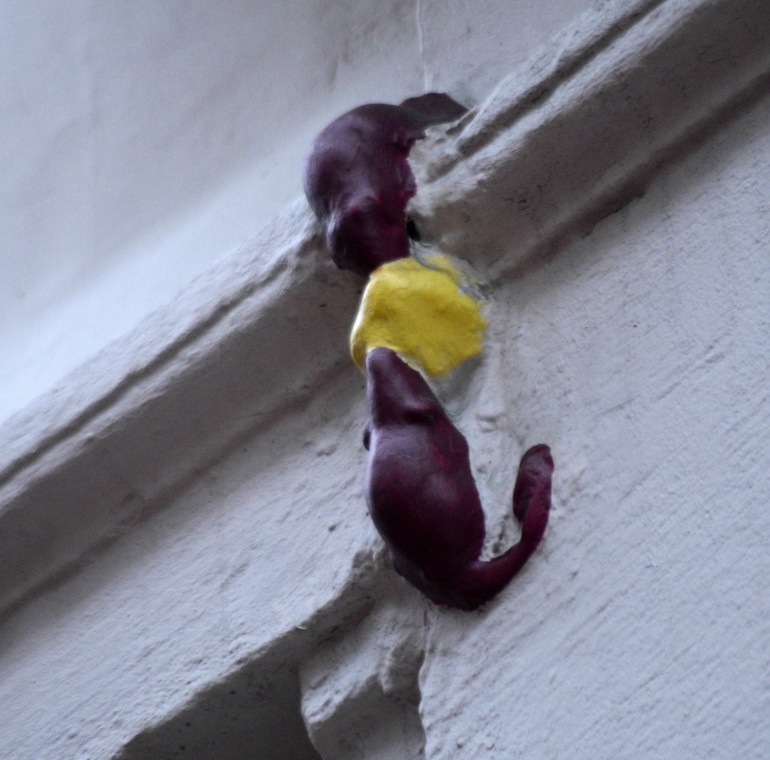 Philpot Lane in London – The Two Mice Eating Cheese. Photo Credit: © Loco Steve via Wikimedia Commons.
Philpot Lane in London – The Two Mice Eating Cheese. Photo Credit: © Loco Steve via Wikimedia Commons.
Just another short walk away, you can see a lovely golden owl atop a three-faced clock, looking out to the famous London Bridge and the River Thames.
From here jump on an iconic red London number 15 bus (contactless payment only) and disembark at the magnificent St. Paul’s Cathedral. Look up at the triangular roof on the church’s south to see the resplendent mythical phoenix, which, like the cathedral itself, rose from the ashes.
St. Paul’s is the main church of the oldest part of London, and if you look around now at the street signs and street furniture (bollards and bins), you will see another mythical creature – the dragon on the City of London crest.
Jump back on the 15 bus and head for its final destination, Trafalgar Square.
Along the way, look for a giant dragon (outside the Royal Courts of Justice) marking the boundary between London’s traditional financial and entertainment districts.
Trafalgar Square is where we’ll find arguably the most famous lions in London. Four in total (feel free to give them names, as I don’t think anyone has so far). They’re made from melted down French cannons captured at the battle that gives the square its name. The lions guard the man who led Britain’s great naval victory against the French, and if you look all the way up, you will see Lord Nelson atop his column.
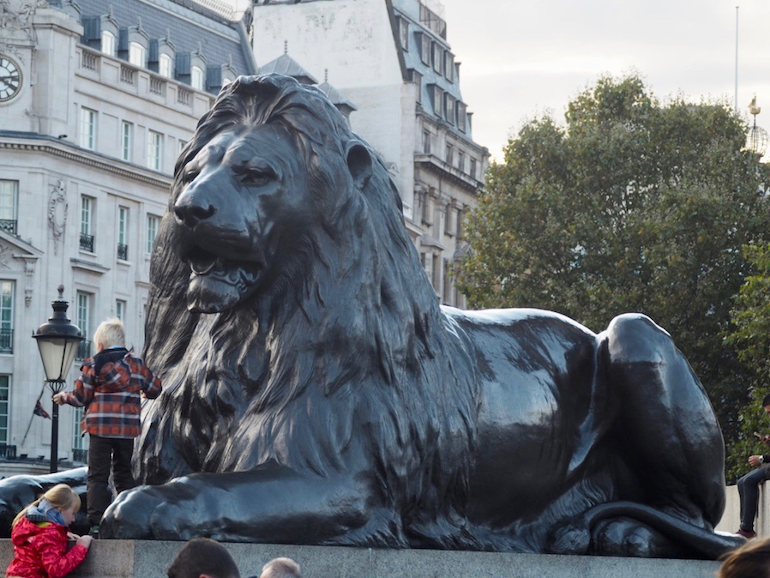 One of the famous statues of four lions in Trafalgar Square in London. Photo Credit: © Ursula Petula Barzey.
One of the famous statues of four lions in Trafalgar Square in London. Photo Credit: © Ursula Petula Barzey.
From here take a short walk to Haymarket. At the top of the street as you approach Piccadilly Circus, you will see the four horses of Helios, the Greek sun god, a reminder that this was once a place where hay was sold, giving the street its name. The Royal Stables had previously been located in Trafalgar Square.
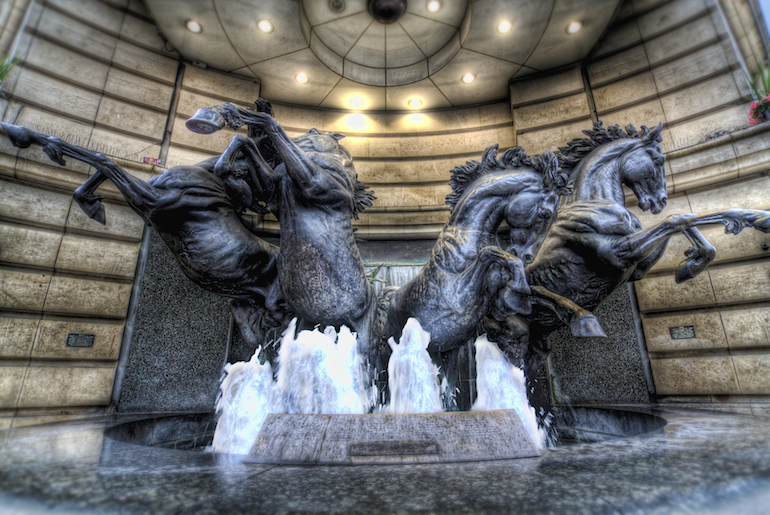 The Horses Of Helios. Photo Credit: © Andy Bird via Wikimedia Commons.
The Horses Of Helios. Photo Credit: © Andy Bird via Wikimedia Commons.
From here, hail one of our famous black cabs and ask to be taken to the Albert Memorial with a quick detour past the Animals in War Memorial on Park Lane. They actually awarded a medal to animals for their service in the Second World War. Can you guess which animal species won the most medals, with 32? (*answer at the bottom)
The Albert Memorial is a spectacular monument to Prince Albert, the beloved husband of Queen Victoria, depicting 169 individual composers, architects, poets, painters and sculptors.
On the four corners of the monument, you will see four very diverse animals: a bison, a camel, an elephant and a bull. Each represents one of four traditional continents: the Americas, Africa, Asia and Europe.
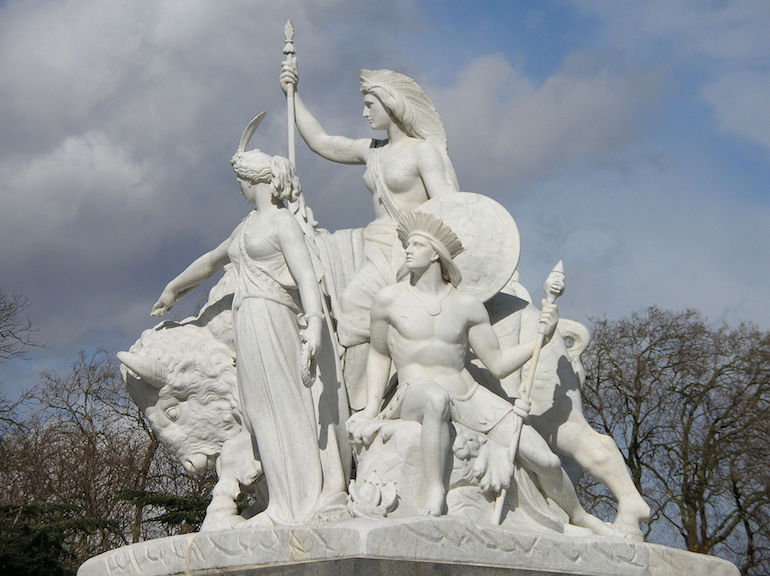 Albert Memorial in London – bison for the Americas. Photo Credit: © James Battersby via Wikimedia Commons.
Albert Memorial in London – bison for the Americas. Photo Credit: © James Battersby via Wikimedia Commons.
From here, wander down to one of London’s greatest museum quarters and head for the mesmerising Natural History Museum, home to a collection of over 70 million items. Incredible collections of everything from the tiny hummingbird to the now extinct giant sloth. When you walk in the main hall, you will see a skeleton of the largest creature ever to inhabit the earth: the gargantuan blue whale. From there. step back in time and enjoy the wonderful dinosaur exhibition in this world-class museum.
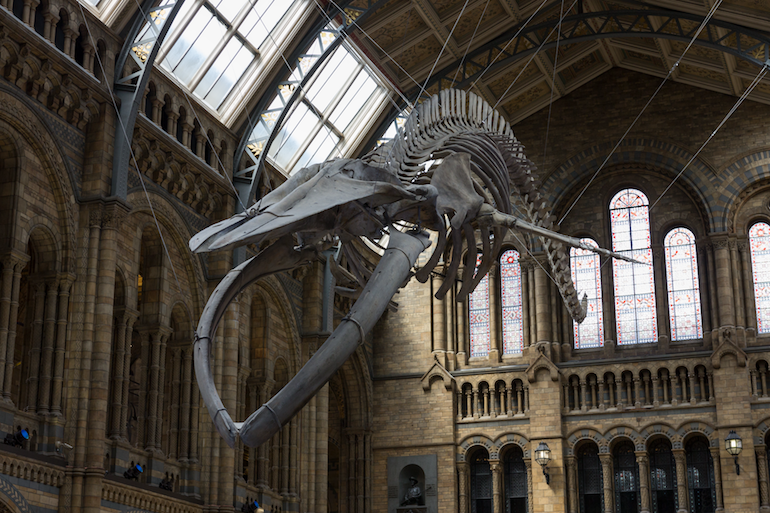 Gargantuan blue whale at Natural History Museum in London. Photo Credit: © Steveoc 86 via Wikimedia Commons.
Gargantuan blue whale at Natural History Museum in London. Photo Credit: © Steveoc 86 via Wikimedia Commons.
You’ll probably be quite hungry by now, so head next door to the equally fantastic building that has the world’s oldest museum café (and undoubtedly one of the most beautiful) – the Victoria and Albert Museum. Before you eat, search out one last creature that is a highlight of the museum’s collection – Tipu’s Tiger. Made in the late 18th century, this essentially giant toy, made for a ruler of India, depicts a fierce tiger mauling a European soldier!
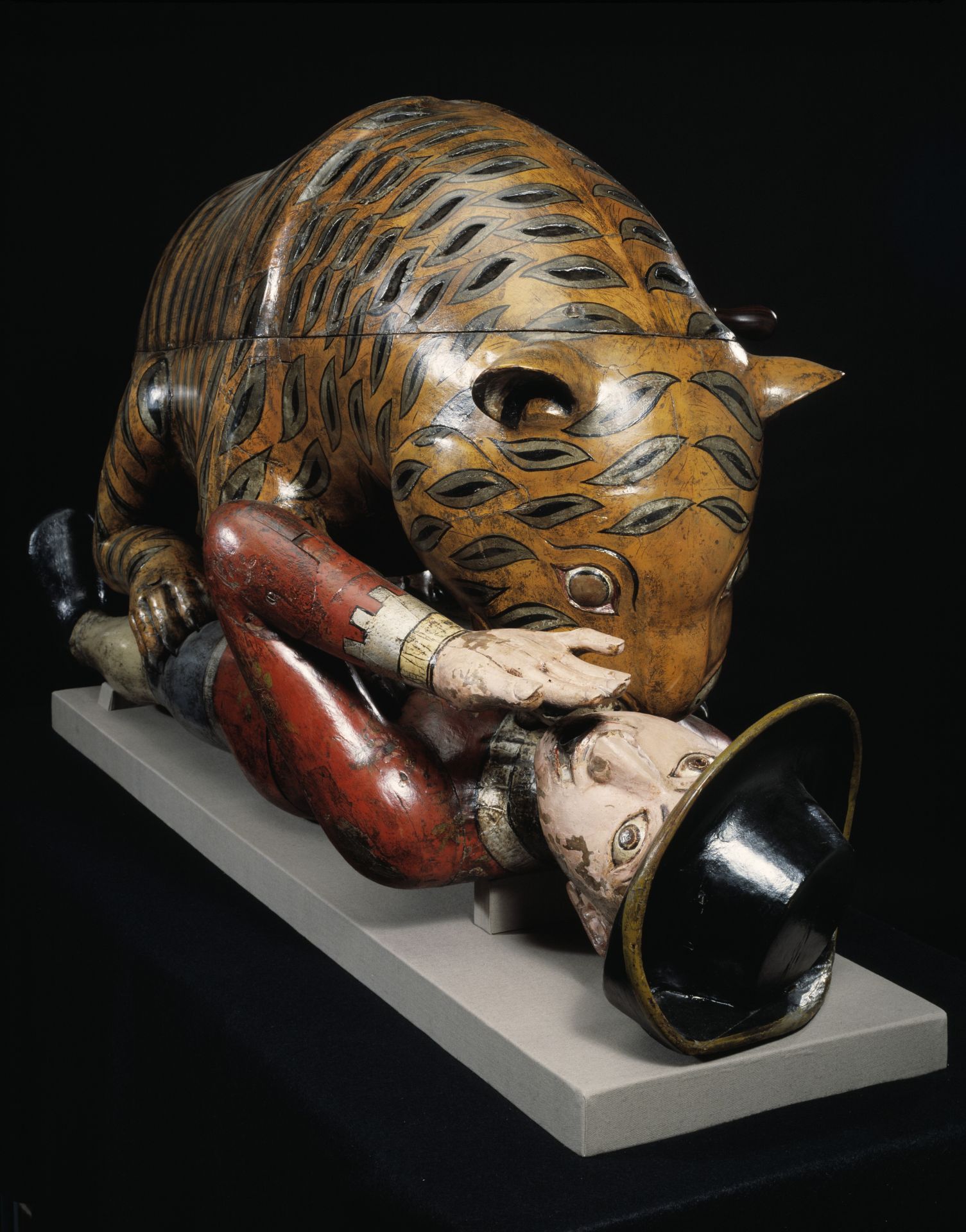 Victoria & Albert Museum – ‘Tipu’s Tiger’, a carved and lacquered wooden semi-automaton in the shape of a tiger mauling a man, Mysore, India, about 1793. Photo Credit: © Victoria & Albert Museum, London.
Victoria & Albert Museum – ‘Tipu’s Tiger’, a carved and lacquered wooden semi-automaton in the shape of a tiger mauling a man, Mysore, India, about 1793. Photo Credit: © Victoria & Albert Museum, London.
Hopefully, this has awoken your inner explorer. But next time you’re able to come to London, if you still feel you could do with an expert who knows the “lay of the land”, why not book a tour with a Blue Badge Tourist Guide. They will help you get the most out of your trip while helping you discover many more animals along the way, including a golden eagle, a giant grasshopper and even some lost sheep.
*Answer- the most Dickin medals were awarded to the pigeon!



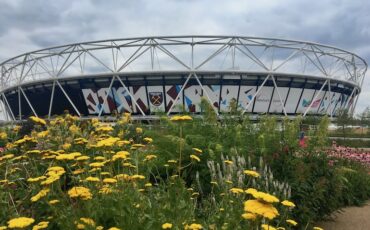
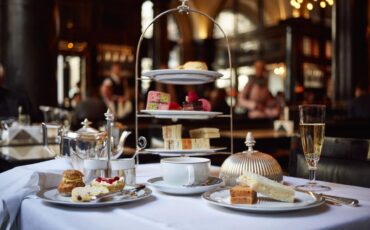


Leave a Reply